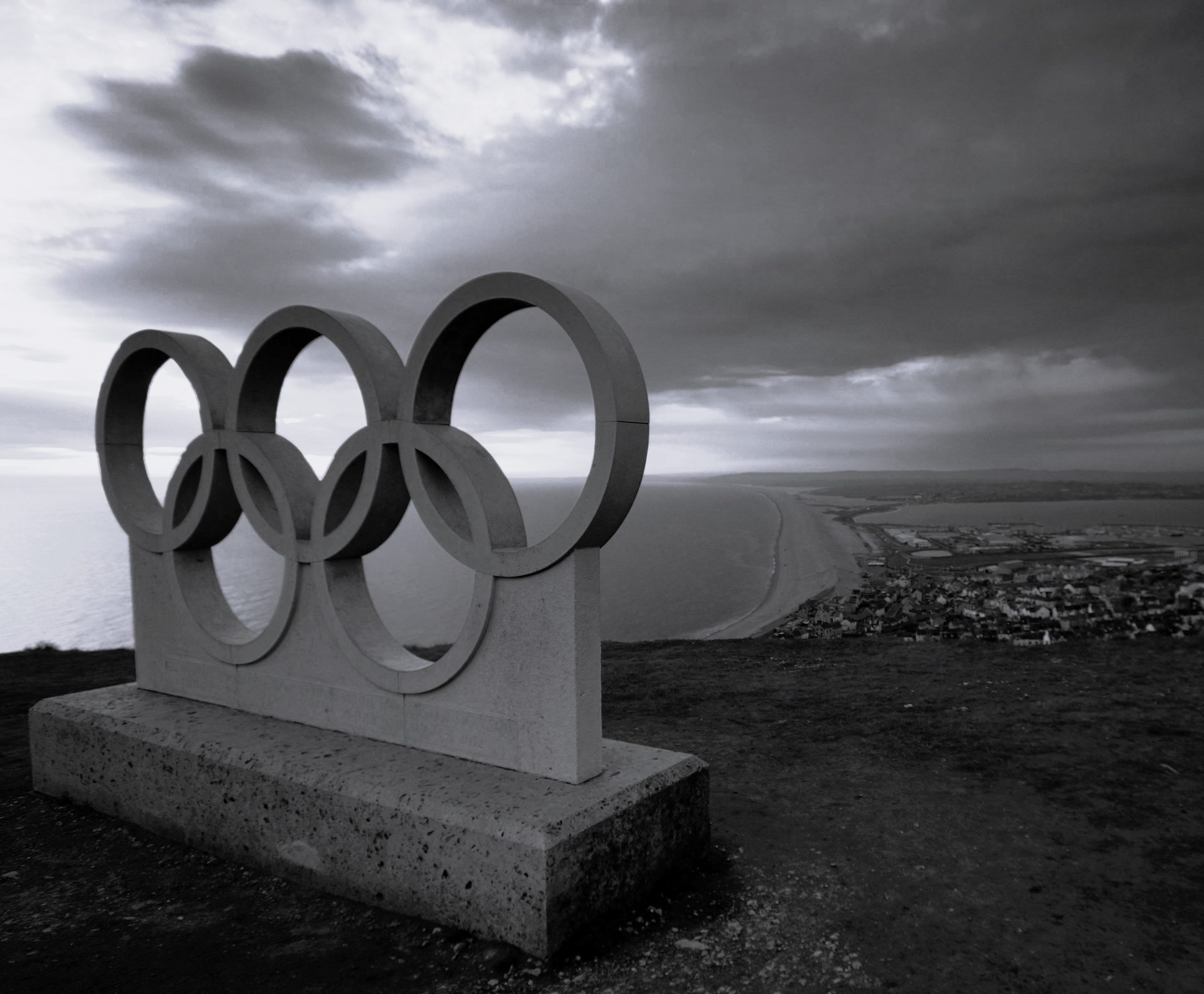An athlete pretending to bite her medal, but, really, not wanting to damage her perfect teeth by the looks of things.
They don’t give you gold medals for beating somebody. They give you gold medals for beating everybody.
Michael Johnson, sprinter
Why do Olympic winners bite their gold medals? The short answer is: for no other reason than a photographer just told them to. But the tradition of biting gold goes back a long way.
You might have seen pirates in movies biting their coins too. While such hard-toothed individuals might inspire excitement in modern audiences, ordinary merchants and traders, indeed anyone handling money, used to bite their coins too: it was a rude test of the purity of the metal. Prospectors in the 19th-century gold rushes also used this method to differentiate between real gold and fool’s gold?
As well as scraping (to look for plate) or indenting to test softness, biting might involve a little bending too, using the teeth as a clamp to bend against. If the metal is soft and malleable, it was likely pure gold or silver. Hard and brittle, it could indicate that the coin was counterfeit or mixed with other metals. Too soft, however, and the coin was likely lead, coated with gold, a common counterfeit in the 19th century. (Lead is softer than gold).
The method might expose crude forgeries, but it would by no means have been foolproof. Copper was added to gold coins from the Tudor period onwards, which would have made them harder, and the bite test that much less reliable, though in Mediaeval times biting might have worked better. Coins, such as Florence’s florin, the standard of the day, were 24 carat, thin, and relatively soft. The bite test might have exposed forgeries.
Weighing is more effective, and any merchant would have a set of scales, though perhaps not a pirate. The stamp of the issuer, ideally a reputable royal, also went a long way to certifying authenticity.
For the prospectors of the gold rushes, however, who only required a simple differentiation between actual and fool’s gold, the bite test would have been more dependable. We have always used our bodies to measure things.
Looking to buy gold in these uncertain times? Then check out my recent report, and look no further than my recommended bullion dealer, the Pure Gold Company. Premiums are low, quality of service is high, and you get to deal with a human being who knows their stuff.
What are gold medals made of?
Today’s Olympic winners needn’t bother biting their gold. The last time an Olympic gold medal was made of solid gold was over a hundred years ago in 1912 in Stockholm.
The gold medals at the 1896 Olympics in Athens, when the Games were first revived, did not contain any gold. They were made of silver and gilded with a thin layer of gold. The same happened at Paris in 1900.
Things perked up for the athletes in 1904 at the St. Louis Olympics, when the gold medals were made of 12-karat gold (50% gold, 50% copper). There was a considerable upgrade in 1908 in London, when the gold medals were 22-karat gold, weighing almost an ounce (25g).¹ This proved the peak. (Just as it was probably Britain’s peak too). There were 109 gold medals handed out. That’s over 100 ounces. Expensive!
Steady debasement followed. At the 1912 Stockholm Olympics the gold medals were 18-karat gold. From 1920 in Antwerp onwards, the medals were back to gilded silver.
Today the International Olympic Committee stipulates that modern Olympic gold medals must weigh at least 500 grams, and contain at least 6g of gold. Olympic gold medals remain largely of silver (93%), copper (6%), plated with about 6 grams of (a bit more than a 1/5 ounce) of gold. A gold medal is thus roughly 1% gold.²
At the 2022 Olympics in Tokyo, the metals to make the medals came from a recycling initiative. The Japanese handed in nearly 80,000 tonnes of electrical gadgets, including laptops, digital cameras, gaming devices and 6 million phones. The appliances yielded 32kg/1,000 ounces of gold, 3,500 kg/113,000 ounces of silver and 2,200kg of copper. (There is, I learn, about eighty times as much gold in one tonne of cellphones than there is a typical tonne of rock at a gold mine).
All 5,000 medals were made from the recycled materials, which were identified using Vanta X-ray fluorescence analyzers, which can identify metals and accurately determine their karat value in a matter of seconds.³
This article was originally published in The Flying Frisby and is republished here with permission. You can sign up for their newsletter here.
1 Olympic Museum. (n.d.). Olympic Games – Winner Medal 1908. Olympic-Museum.de. Retrieved March 25, 2023, from https://www.olympic-museum.de/w_medals/olympic-games-winner-medal-1908.php
2 Tan, W. (2021). Are Olympic Gold Medals Actually Made of Gold? Olympus-ims.com. Retrieved on 2023, March 25 from https://www.olympus-ims.com/en/insight/are-olympic-gold-medals-actually-made-of-gold/#:~:text=First%20place%20(gold%20medal)%3A,a%20purity%20at%20least%2092.5%25.
3 Tan, W. (2021). Are Olympic Gold Medals Actually Made of Gold? Olympus-ims.com. Retrieved on 2023, March 25 from https://www.olympus-ims.com/en/insight/are-olympic-gold-medals-actually-made-of-gold/#:~:text=First%20place%20(gold%20medal)%3A,a%20purity%20at%20least%2092.5%25








